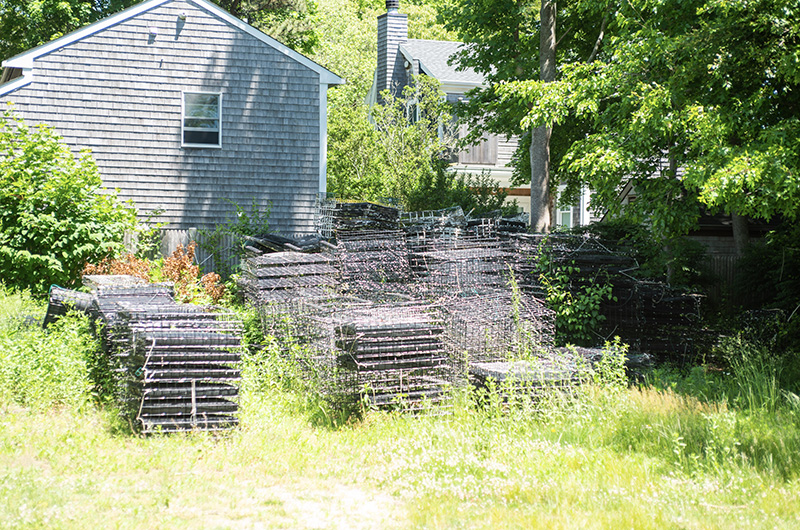Ray Ewing and I went down to Lake Tashmoo with Noah Mayrand on Sunday because we thought he was starting an oyster farm over there. It would have been the first one in Lake Tashmoo. His partner Angela and Ray’s partner Kate came too.
When we got down to the dock, we waited while Noah rowed out to get his boat. I borrowed Noah’s rod. Ray and I took a handful of barely earnest casts off the dock. When he saw my lure grab he asked if I had something. “It’s just the weeds pulling,” I told him.
“It’s just you pulling,” Ray said.
Kate and Angela got caught up on their lives and tested Ray’s cameras.
“There could be fish anywhere,” Ray suggested.
After a minute, Noah rowed back. “I don’t have the key,” he said. He and Angela went back to the truck to look for it.
On the end of the dock Sean Yancey and his daughter Salyn were getting into their skiff. We talked while we waited for Noah. Sean got a good deal on a new old sailboat. He and Salyn were going out there to try and figure out why the roller furler wasn’t working. “What are you doing over here?” he asked.
As I told him we were going to do a report on Lake Tashmoo’s inaugural oyster farm, Noah and Angela returned with the key. “What is it called?” Sean asked. Sean is a gourmet chef. He’s cooked at a lot of Island restaurants so he’d naturally be curious about changes in the Island food scene.
“Tisbury Oyster Company,” Noah said. “Keeping it simple. I’m still a year away from having fully-grown product.”
“You’re going to grow them here in Tashmoo?” Sean asked.
“No, the farm is in the Lagoon. I wanted to grow them in here but the town wouldn’t let me,” Noah said.
For five years Noah had tried to get permission from the town to build an oyster farm in Tashmoo. Only then Ray and I learned the town of Vineyard Haven hadn’t allowed it. “They decided the area I had suggested was sensitive habitat for eelgrass,” Noah said.
On the flat water in the shining sun, Noah’s boat gave us all an early taste of summer. In the spot where Noah originally wanted to start his farm, nine motor boats were anchored from Falmouth and Edgartown. People were swimming and passing around cocktails.
“There’s huge parties here all summer long,” Noah said.
It is hard to imagine how anchors that constantly come up and down might not be as destructive as the concrete blocks that keep racks of cages of shellfish from floating away, but pleasure boaters definitely aren’t making it cleaner. Shellfish in an aquaculture farm pull nitrogen and phosphorous from the water, decrease acidity and sequester carbon from the atmosphere.
“Where are we?” Kate asked, as we motored through the turbulence in the cut, beside a shiny row of parked European SUVs, into the open water of the Sound.
On our way to the Lagoon to get pictures of Noah’s farm, we somehow made the decision to cut the engine and anchored over Middle Ground. Watching the sand swirl underneath us in the current made us all reflective.
Noah, whose dad worked as a plumber the whole time he was growing up in Vineyard Haven, now works as a plumber himself, four days a week. It has helped him save the money to invest in the farm. “Doing water filtration in people’s houses and raising oysters, you’re kind of doing the same thing,” Noah said. When water is clean it nourishes people and the stuff we share the world with. When it’s dirty, it’s poison.
After Ray caught a 25-inch striped bass, we pulled up our anchor. Ray and Kate had to get back to the Island to photograph Charter School graduation that afternoon. Boats nearby rushed to where we had been fishing. “It’s my biggest of the season,” Ray said. The handsome fish had charged from his hand against the current, back over the sand bar.
“This boat is always lucky,” Noah said proudly of the stripped-down pump-out boat he usses to commute to his farm.










Comments (2)
Comments
Comment policy »